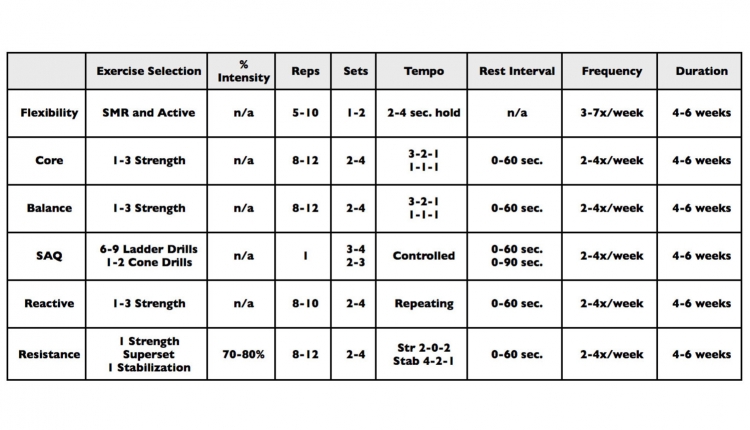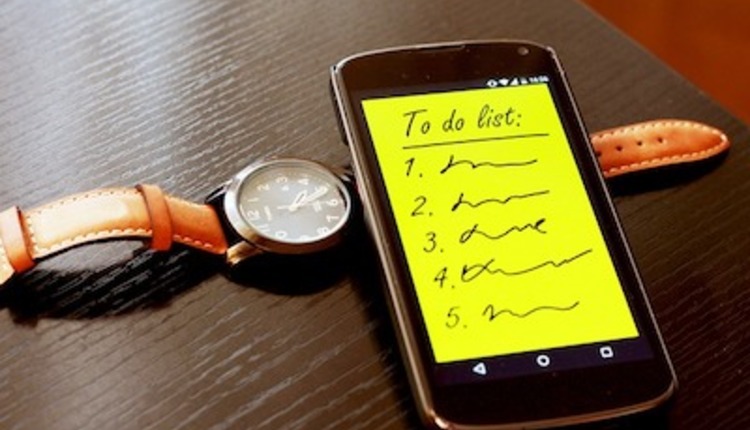In last month’s article, "Starting Off On The Right Foot," I wrote about the importance of using a set of tools that would streamline your approach to training sessions, while giving you a scientific and progressive process to work with, in order to make sure that what you do as trainers is best for your clients, yourselves and/or your business. Now that you understand how and where to begin, let me take you through the process of what to do with all of those sessions that come after the forms and assessments. These are the sessions that will allow your client to progress to, and through, each next higher level of fitness as they strive to attain each of their initial fitness goals. Understanding the anatomy of a personal training session will allow you to deliver each critical Step in a coordinated and productive manner, thereby ensuring each session is appropriate, beneficial and rewarding to your client. The result? Your client will leave each session more satisfied and confident about their progress and motivated by fresh enthusiasm to return to their next session.
Using a science based and scalable approach throughout every training session from start to end, provides you with the ability to manage each step of the session with the utmost flexibility based on your client's individual and unique fitness level on any given day. This is important to keep in mind because there are many factors that can impact your client between sessions and alter their fitness level either positively or negatively. Knowing how to modify their training during each step of each session is imperative.
There are seven major steps in a complete session...
STEP 1: Self-myofascial compression techniques
This is the first, and very crucial step in preparing for the demands of the upcoming workout. The purpose of performing these exercises is to hydrate the myofascial tissues and reduce the sticky spots (knots and adhesions). In doing so, tissue temperature is increased, aches and pains normally subside, flexibility is improved, and neuromuscular efficiency increases. Typically, clients have knots, adhesions and dehydrated tissue located at the bottom of their feet, lower legs, thighs, lower back and upper back. Using Trigger Point Therapy Tools' exercises and protocols is the best method to address this. Once taught and properly learned, these can be performed without your direct supervision prior to the beginning of each training session.
STEP 2: Check-in
This is where you officially greet your client and begin their session. Once personal greetings have been established, an important question to ask your client is: "Have you experienced any soreness, pain, stiffness or problems since I last saw you?" Based on their response, you should record relevant information and modify their workout accordingly.
STEP 3: Movement screen(s)
Performing a brief movement screen quickly provides you with an understanding of how your client is functioning mechanically at that moment, resulting in the necessary guidance required set up the remainder of their session.
To perform this, have your client stand directly in front of you, facing the opposite direction. Next, have your client walk away from you for a distance of about 20 feet, then turn and walk back to you. During this gait assessment, it is important to watch how they place their feet, and analyze how their hips, knees and ankles function collectively. Also, you will be checking closely for postural differences in the way they swing their arms and carry their shoulders as they move through each stride. These observations will aid in your selection of corrective movement prep exercises used in the next step.
STEP 4: Movement prep (general and corrective)
You already know that the purpose of a warm-up is to prepare the body specifically for the pending challenges of the training session. By systematically and progressively preparing the body from the bottom to the top, you are ensuring that your client is fully prepared and engaged, both mentally and physically, to proceed with the more demanding exercises in the next phase of the training session. This systematic approach incorporates all planes of motion and is used to deliberately assist the brain in making the proper neural connections with the rest of the body to facilitate the correct movement patterns. Simply put, it's having the muscles practice exactly how they are supposed to move in the correct way so it becomes a habit that will protect those same muscles from moving improperly during an exercise, which could lead to improper stress and injury.
Most every client will have some kind of special issue(s) that needs to be dealt with on an ongoing basis, separate and apart from their overall fitness goals. The exercises used in this step are selected based upon the issues you discovered in the previously performed functional movement screen, and sometimes supplemented by the information gained from the gait assessment. For example: you may have discovered that while performing a barefoot squat, your client’s feet flatten, their knees dive in rotating internally, and their heel(s) come up. This is referred to as Pronation Distortion Syndrome. To the trained eye, this mandates a selection of corrective exercises that will strengthen the posterior and anterior tibialis, VMO, biceps femoris and gluteus medius, and that will lengthen the peroneals, adductors, medial hamstrings, TFL/ITB and psoas.
Movement Prep begins with "activation" exercises that address the issues observed in the preceding movement screen section of the session. After choosing and performing exercises to address the observed issues, proceed by having your client perform 2-3 exercises that address the foot/ankle, hips, and thoracic spine. For video examples of these, please click this link, or go to www.catalystfitness.com.
STEP 5: Body of the workout
At the heart of the training session is the set of loaded movement patterns (exercises) you specifically select to further challenge your client on their journey to attain their fitness goals and achieve their next higher level of fitness. This is the reason why they kept their appointment with you today and the "meat" they are hungry for. This is the "personal" part of their personal training session with you, the point at which you let your trainer magic happen. You have the power to create an individualized program of exercises perfectly suited for that particular client. Take every fact, theory, and idea you have learned in all of the classes you have taken and place in your magic mixing bowl; then add every item of information you have learned about your client. Next, stir all of the ingredients together with all the care and passion you possess, and voilà, There you have it! The magical set of exercises that only you could produce and deliver to that special client!
STEP 6: Cool-down
Now that you have put your client through their paces, and hopefully taken them to new heights and places they have never gone before, it is important to bring them back to a state of calmness by regressing their heart rate and soothing those tired muscles with SMR (self-myofascial release). NEVER allow your client to abruptly stop their high (or low) intensity workout and just leave, no matter how pressed for time they may seem. Part of your duty as their trainer is to educate them why this cool-down process is so important and vital to their well-being. Once they fully understand that it prevents blood pooling in the extremities, which can lead to a sudden decrease in blood pressure, fainting, dizziness, and death, you will certainly have their full cooperation. Providing your client with a proper cool-down allows them to leave your facility feeling refreshed, invigorated and alert, ready to safely meet the rest of their day’s challenges and demands.
STEP 7: Closing comments
A wise trainer once told me, "What your client remembers most is the last five minutes of their session, so make sure they feel good about their session and are happy to have been there!" The last part of the cool down is the best time to emotionally reinforce your client by giving your feedback on their session. This is a transitional step, that if done correctly, will not only bolster their confidence in their ongoing progress; but also, reinforces their relationship with you, their trainer. It is imperative that your feedback is informative and encouraging. While speaking to your client, make sure he or she consumes some water to restore hydration lost during the session. While your client takes a few sips, they have a chance to think about what you are saying, which will let them leave feeling valued and respected, and excited about their next session.
Using these seven steps will ensure that your plan for the training session follows an evidence based, systematic, and scalable approach, and thus, provide all of your clients with an individualized training session that is specific to their goals and needs.
Valorie Ness is CEO of Catalyst Fitness Midtown located in Atlanta, Georgia. She has been in the industry for over 15 years and travels nationally and internationally as an educator and presenter. Valorie is the 2013 PFP Trainer of the Year, master trainer for ACE, Red Cord and Catalyst Fitness.www.catalystfitness.com













